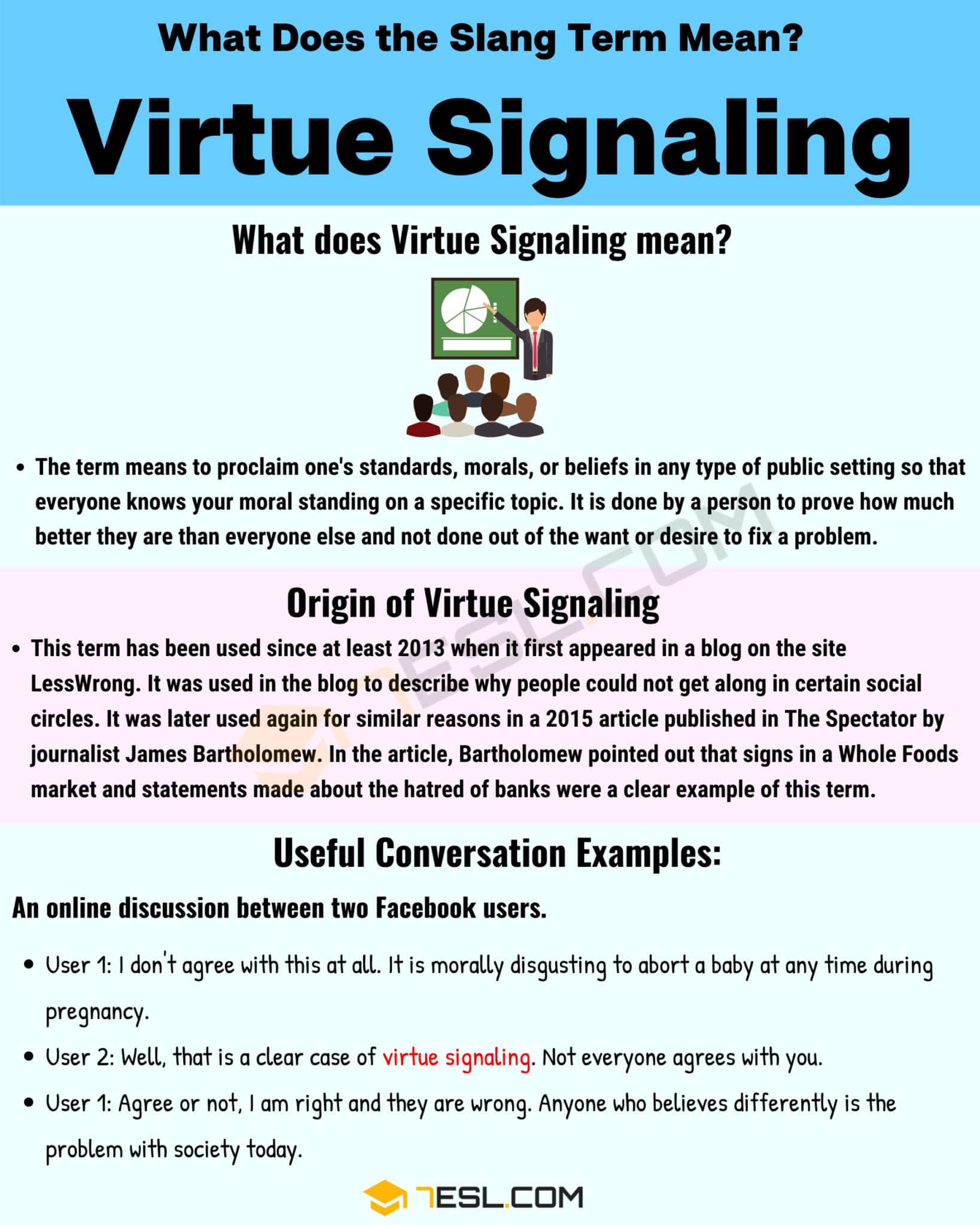Architecture's Identity Crisis: A Leading Architect On Virtue Signaling

Table of Contents
The Rise of Virtue Signaling in Architecture
Defining Virtue Signaling in the Architectural Context
Virtue signaling in architecture manifests as architects using sustainable materials, emphasizing community engagement, or promoting social housing projects primarily to project a socially conscious image, potentially overshadowing the actual design quality or functionality. It's about the appearance of ethical practice rather than the substance.
-
Examples of architectural virtue signaling:
- Using reclaimed wood solely for aesthetic appeal, neglecting its structural limitations and potentially compromising building safety.
- Showcasing elaborate community workshops as a core design element, without demonstrating tangible benefits for the community beyond a photo opportunity.
- Incorporating "green" features that are ultimately ineffective or have a minimal environmental impact.
-
Genuine social responsibility vs. performative acts: The difference lies in intent and impact. Genuine social responsibility integrates ethical considerations seamlessly into the design process, prioritizing long-term sustainability and community benefit. Performative acts, on the other hand, prioritize image over substance, focusing on superficial displays of ethical concern.
Motivations Behind Architectural Virtue Signaling
Several factors contribute to the rise of virtue signaling in architecture:
- Impact of social media and public opinion: The pressure to maintain a positive online image and receive favorable public perception strongly influences design choices. Architects might prioritize aesthetically pleasing "green" features over more effective, but less visually striking, solutions.
- Seeking grants and attracting clients: Grant applications and client briefs often prioritize sustainability and social responsibility. Architects may emphasize these aspects to increase their chances of securing projects, even if it means compromising on other design elements.
- Role of architectural awards and recognition: Awards frequently reward projects that highlight social responsibility, potentially incentivizing architects to prioritize virtue signaling over genuine design innovation.
The Impact on Design Integrity
Compromising Aesthetics and Functionality for the Sake of Appearance
The focus on virtue signaling can lead to significant compromises in design quality, functionality, and longevity. The pursuit of a "virtuous" image might overshadow critical design considerations.
- Examples of negatively impacted projects: Projects that utilize substandard materials for the sake of appearing sustainable, resulting in structural weaknesses or early deterioration. Buildings designed with impractical layouts to accommodate performative community engagement spaces, sacrificing usability and efficiency.
- Balancing social responsibility with design excellence: The challenge lies in finding a balance. Ethical considerations should inform, not dictate, the design process. Sustainable and socially responsible architecture should be integrated thoughtfully, without compromising the fundamental principles of good design.
The "Greenwashing" Effect in Sustainable Architecture
The concept of sustainable architecture is often misused for virtue signaling, leading to "greenwashing" – presenting a misleadingly positive image of environmental performance.
- Criteria for truly sustainable architecture: True sustainability considers the entire lifecycle of a building, encompassing material selection, construction methods, energy efficiency, and operational impact. It necessitates transparent and verifiable data, not just aesthetically pleasing green features.
- Transparency and accountability: Architects have a responsibility to be transparent about their sustainable practices, providing verifiable data to support their claims and avoiding deceptive marketing tactics.
A Leading Architect's Perspective
Interview with Renowned Architect, Anya Sharma
Anya Sharma, a leading architect known for her commitment to both sustainable design and aesthetic excellence, shares her insights:
- Anya Sharma's definition of virtue signaling in architecture: "Virtue signaling in architecture is when the emphasis is placed on projecting a certain image of ethical responsibility rather than truly integrating ethical considerations into the core design process. It's about the appearance of sustainability or social responsibility, not its genuine implementation."
- Her perspective on the ethical implications: "It undermines the integrity of the profession. It fosters mistrust between architects and the public, and ultimately, it prevents us from creating truly sustainable and responsible buildings."
- Her recommendations for a more authentic approach: "We need to move beyond superficial gestures and focus on creating buildings that are not only beautiful and functional but also genuinely sustainable and beneficial to the community. This requires a holistic approach, embracing transparency, collaboration, and rigorous evaluation of our design choices."
Conclusion
The rise of virtue signaling in architecture presents a significant challenge to the profession. While social responsibility is paramount, the pursuit of a virtuous image should not come at the expense of design integrity, functionality, or true sustainability. This article highlighted the potential negative impacts of prioritizing superficial displays of ethical concern over genuine commitment. The key takeaway is the need for a balanced approach that integrates ethical considerations seamlessly into the design process without sacrificing design excellence. We must demand genuine social responsibility in architecture, not just superficial virtue signaling. Advocate for transparent and accountable design processes that prioritize both sustainability and aesthetic excellence. Let's build a future where architectural design is truly driven by both ethical considerations and outstanding design.

Featured Posts
-
 Controverse Baffie Ardisson Des Blagues Jugees Sexistes A La Television Francaise
May 26, 2025
Controverse Baffie Ardisson Des Blagues Jugees Sexistes A La Television Francaise
May 26, 2025 -
 How Big Is Red Death Compared To Toothless A How To Train Your Dragon Poster Analysis
May 26, 2025
How Big Is Red Death Compared To Toothless A How To Train Your Dragon Poster Analysis
May 26, 2025 -
 Gauff Defeats Zheng To Reach Italian Open Final
May 26, 2025
Gauff Defeats Zheng To Reach Italian Open Final
May 26, 2025 -
 Hollywood Shutdown Double Strike Cripples Film And Television Production
May 26, 2025
Hollywood Shutdown Double Strike Cripples Film And Television Production
May 26, 2025 -
 Elon Musk Et X Un Outil Pour L Essor De L Extreme Droite En Europe
May 26, 2025
Elon Musk Et X Un Outil Pour L Essor De L Extreme Droite En Europe
May 26, 2025
